
Following on from his recent 'hard-hitting' UKC article on head injury, 'Like I need a Hole in the Head', Toby Dunn decided to broach the subject of wearing - or not wearing - helmets in discussion with some friends and eminent climbers. What factors influence our decision to wear a helmet, or do away with it?
“The dangers of life are infinite, and among them is safety” - Goethe
“Take calculated risks. That is quite different from being rash” - General George Patton
I am not going to say that you should wear a helmet the next time you go climbing, or that you should not. General Patton was rarely seen without his olive green lid, Goethe probably couldn’t get one on over his bouffant hairdo. Goethe probably faced rather fewer bullets than Patton, however.
Next time you go to the crag, will you consider it? I’m not going to argue one way or the other, but having suffered a serious head injury from a climbing fall, I want to try to understand why, as a group, there seems to be an in-built reluctance to wear a helmet in most climbing disciplines. I’m not going to cover technical aspects of helmet strength, protection etc; I suspect that the oft-cited cliché that the best helmet is the one that you actually wear is the best guidance.
I feel that many climbers, including myself, choose not to use one the majority of the time. We don’t even think about putting a helmet in the bag (or perhaps own one at all). We don’t really think about the level of risk involved, whether we are bouldering, sport climbing, trad climbing or mountaineering. I firmly believe that this is a personal and individual choice, whether I’m at the crag, or out on my road bike, this isn’t something that should be enforced on anyone.
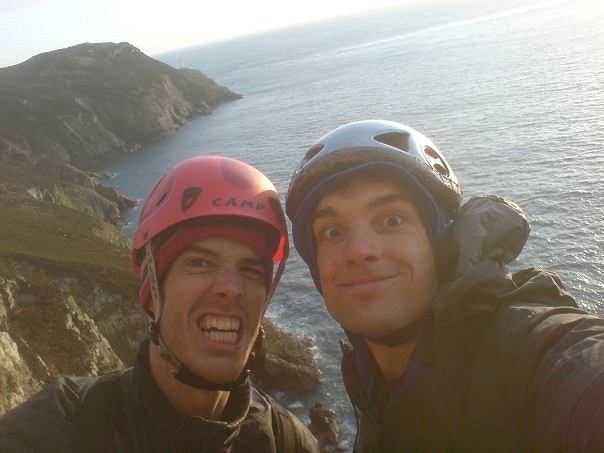
I think that I would feel deeply uncomfortable on a bike without a helmet on, and certainly wince when I see others out flying along Peak District roads with just a cotton cycling cap on. However, even having sustained a serious skull fracture with life threatening bleed onto my brain in a climbing fall, I’m still not sure about how I personally feel about wearing a helmet climbing. It seems odd to me that this is still something that I feel I have to make myself do. Is this nothing but vanity, or habit? I have recently worn a helmet for leading routes indoors (but not for top roping), and surprised myself by not feeling ridiculous, in fact I pretty much forgot about it almost instantly. Why do I still feel so reluctant to put one on when I go back to sport climbing outside; yet when I’m cycling it doesn’t occur to me not to wear a helmet?
I wanted to try to aid my thought process, and hopefully yours, by talking to a few different prominent climbers to try to unearth whether they feel they have made a conscious choice about wearing a helmet. The first person I spoke to was Andy Cave: Andy is well known as a consummate and extremely able all-round climber who has a huge CV of climbing in British trad onsight and headpoints, sport climbing, alpine climbing and ground-breaking Himalayan objectives.
First off, I asked Andy when and why he decides whether to wear a helmet climbing.
'I always use a helmet in the Alps even on easier ground and on descents. Probably keep it on when others have taken it off. Same for when guiding; you are a role model, so I wear it most of the time. I also wear when if I’m sea cliff climbing, on multi pitch trad or hard head points. There are times when I don't - sport climbing, indoors, easy scrambling, skiing off piste and ski touring. I rode motor bikes as a teenager, off road, and I always wore a helmet; not everybody did, remember, this was Barnsley! I think piste skiing is good helmet territory, hard pistes, lots of people.'
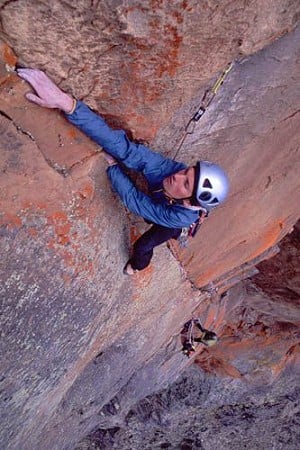
I also wanted to know how this had been influenced by his life or by improving equipment:
'Lightweight, more comfortable helmets have helped, though I'm not sure how some would cope with falling rock or ice…'
Pressure, even contractual obligation to wear a helmet, is normal in many other sports: I wondered if Andy had ever experienced this (I've not heard of this happening in climbing myself).
'I’ve never felt any pressure; the only pressure I feel is to be a good role model to my daughter. I think telling people what to do would be a shame. The freedom of being a climber is linked to escaping norms-rules. If it became regulated like scuba diving that would be sad. I think there is a cool factor in climbing; style of clothes etc which may put folk off helmets. Having said that (Ben) Bransby wears a pretty old school bin lid on some major waddage trad lines.'
The thing that stands out for me from Andy’s comments is how environment-specific his decision is. This makes me think about the acceptance of helmets in different climbing disciplines. As a broad generalisation, I would say that helmets are accepted as ordinary in traditional climbing, though they are considerably more common on multi-pitch crags than single pitch crags. I don’t know if this really represents a rational choice: is the risk higher? Is there a higher risk of falling debris on a bigger crag? Granted there may be a higher chance of loose rock, but on many occasions I’ve had bits knocked at me by sheep on Peak grit, youths chucking things from the top of Chudleigh rocks, and drunks drop a tinny of Special Brew at me (!) while soloing Great Western at Almscliff; all are (mainly) single pitch venues, but in dozens of days out on Main Cliff at Gogarth, I can’t remember anything falling in my direction, yet I’d always wear a helmet there. (NB I am not saying that Gogarth does not have loose bits).
There seems to be a balance of ‘cool’ vs ‘risk’ in Andy Cave’s decision making. It’s interesting that as a rebellious youth, he wore a helmet routinely biking, when many of his peers did not. This fact, as well as knowing Andy, makes me think that he isn’t really influenced by the actions of the crowd, nor by what others think of him, other than his daughter. A helmet seems to be a given as part of the professional climber’s appearance to those outside our climber's clique, but their use is culturally rejected within climbing itself. I find this fascinating: we are surely a vain bunch with a serious image obsession, if we see a climber with a helmet as somehow less carefree, or less able than one with his or her hair flapping in the breeze.
In sport climbing and bouldering, helmets become rarer still, although they seem to be more accepted on gritstone highball problems / routes (I certainly used to put one on to solo harder grit routes with no gear). I don’t think this decision was based on a logical, realistic assessment of risk but on a ‘feeling’ or intuition that it was a good idea. Is this really the right way to be making a decision that could influence the consequences of an accident and reduce risk of serious brain injury or death?
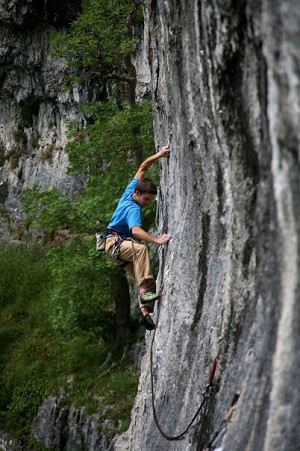
There is no way that I can really even attempt to begin to answer these questions, nor should I. All I want to do by addressing them, is to make you think about your decision, and whether you are making it on the basis of what matters to you.
I talked to a couple of people who know me well, to try to see whether a close friend having an accident changes either attitudes, or perspectives. Stu Littlefair is well known for his long history of hard bouldering, an ascent of Rainshadow 9a at Malham, as well as being an eminent astrophysicist. He is not the master of the one-word answer, but he manages to express very well what most of us know, but few act upon.
I asked Stu simply why he doesn’t wear a helmet sport climbing, yet takes one with him when he goes trad climbing:
'Humans, and I include most climbers in that category, are *really* bad at judging risk. In his book, "Risk", Dan Gardner explores the rules-of-thumb we use to make judgements about the dangers we face every day. We think of things as dangerous if they are particularly unpleasant, or if they are easily recalled - like horrific incidents that come to mind easily. By contrast, familiarity breeds contempt, and we ignore the risks we face every day. For this reason, society lives in fear of the terrorist attack, and blithely ignores the danger of the daily commute.
'Climbers are no better at judging risk than anyone else. We don't realise that it's not the terrifying 100-ft, gear-ripping trad fall that will get us in the end. It will be forgetting to check our knot, or a foot slip on easy ground. We don't wear helmets when bouldering, or on solid sport crags because we "feel" safe. But for many, these activities represent most of the time on the rock, and a dispassionate view of the risks involved suggest it would be a good idea indeed.
'Of course, despite knowing all this in theory, I still don't wear a helmet at Malham, or bouldering on the grit. In fact, until recently I didn't wear a helmet whilst trad climbing most of the time, either. It's just too easy to pretend "It can't happen to me". What changed for me was getting a helmet I didn't notice I was wearing - in my case a delightfully orange Petzl Sirrocco. Modern helmets are lighter and more comfortable than ever, and you're more likely to wear a helmet that you don't hate wearing!'
I think it was Steph Davis (prominent all round US climber) who observed that she knew only two climbers who were not in denial about the risks that they were taking in their activity (Peter Croft, soloist of most of the harder routes in Yosemite, was one). I would genuinely struggle to think of anyone whom I know - climber or not and including myself - who is not in denial about the consequences of the risks that they take every day. As Stu points out, we’re terrified of terrorist attacks, but in five years (2000-2015) they killed 90 people in the UK. Road traffic accidents cause nearly 2000 deaths, and over 20,000 serious injuries, every single year in the UK; yet people still commonly use phones, text, fiddle with stereos, smoke, eat, drink and undertake dozens of other non essential tasks while they are driving.
Stu had altered his behaviour slightly, largely in response to improved equipment. This makes sense given his focus on high performance, high grades, and being vain and not wanting to look like a bumbly (sorry Stu!).
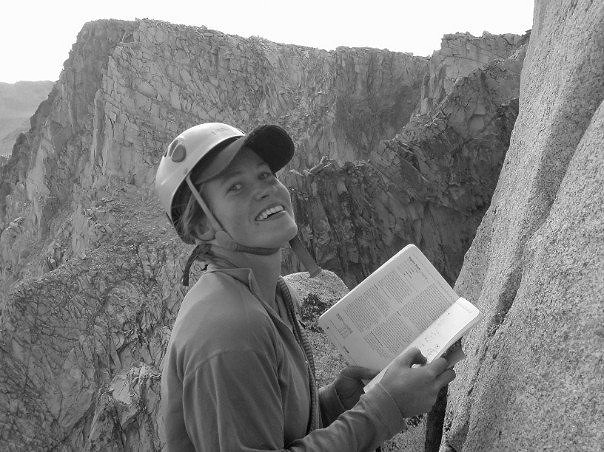
Alan James, who will be well-known by most people reading this as UKC's Managing Director, has also changed his behaviour, but he seems to have responded more to the behaviour of climbers that he perceives as more able (and perhaps as younger and cooler):
'I spent the vast majority of my climbing career not wearing a helmet anywhere, including years of trad sea cliff climbing. I changed to wearing a helmet for trad sea cliff climbing in 2005 after a trip with some young guns to Pembroke, where they were all doing the routes I did 10 years earlier, but were wearing helmets. I gradually rolled this out for all trad climbing.
'I have now started wearing one for outdoor sport climbing after an inverted fall in Finale (no damage). I deliberately don't wear a helmet when soloing (which I still do a bit, but nowhere near as much as I used to), the reasoning being that my mindset is that I can't fall soloing and adding a helmet adds the thought that I might be accepting a fall is possible - it isn't.'
Alan has more rational consideration of risk than many, I’ve long felt that one of the positive things about soloing is that it leads to a more accurate distillation of risk than any other form of climbing. However, like him, I do less of it the older I get. However, like him I’m still deeply irrational: why wear a helmet outdoors but not indoors, if what we are afraid of is an inverted fall? I’d even suggest that one might be more likely indoors due to far more holds projecting outwards to catch a foot on in flight than outside. Alan doubts that climbers are just being vain, citing reports of people bumping their helmets on things all the time. I suspect that this is mainly through not being used to wearing a helmet. I’ve found that when I wear one all the time on an extended trad trip, I don’t really notice it at all, even with a moderately old lid.
Finally, I wanted Keefe Murphy’s opinion perhaps more than anyone else's. Keefe is an extremely accomplished climber, he’s probably climbed an awful lot harder than he’d ever let you think, but he is not in any way well known unless you are a regular on Yorkshire or Peak limestone.
'Nowadays - I try to make wearing a helmet a habit - so that I feel strange without it rather than strange with it. In previous recent years Tansy and I had got modern light-weight helmets for doing trad routes - and kept on saying "We must wear these on sport crags as well" - because on a lot of recently developed lower grade sport crags, there is a lot of loose / friable rock.'
Has your decision been influenced by things that have happened in your life - family / accidents & injuries / improving equipment?
'Up until your accident - I wore it on trad climbing trips and occasionally on loose sport crags in Spain. Now I have decided to make it a habit, despite getting the odd comment or two at Malham: "What's with the helmet?", "What's happened to you?".'
How do you feel about pressure from sponsors to wear a helmet; this is normal in many other sports. How do you think it would go down in climbing?
'I have no issues at all about pressure to wear a helmet. My history is that I started climbing on trad routes in the late seventies in Ireland. We habitually wore helmets all the time - think Fair Head and the Burren sea cliffs. I moved to England in '85 and I continued to climb in a helmet all the time - including my early excursions into sport climbing. I have had a couple of nasty (ish) falls - including one long one off Levitation at St. Victoire - where the double ropes I was on caught a foot and flipped me upside-down with quite a whack to my helmet. In the early nineties, I got out of the habit of wearing a helmet - including on multi-pitch routes - I simply adopted the style of the times. More recently, in the new millennium, I re-adopted a helmet for trad routes and Tansy and I kept on saying that we "really really should" wear one at looser crags - but generally never bothered. Finally - after your accident - we have both adopted them as a habit: me whenever I tie on at a crag and Tansy more-or-less all the time at loose crags. When I say "loose crags", I don't mean the likes of Blackchurch etc, I mean any crags - trad or sport - where there are fragile holds.'
It is interesting, though not surprising, that the people who wear a helmet most have witnessed or perceived themselves close to suffering a head injury. I’d suggest that Stu, although very pro-helmet, might start wearing it more if he’d seen the accident first hand, rather than first seeing me in hospital a couple of days afterwards. More surprising is the fact that I really thought I was going to die from my head injury, but I still feel reluctant to put one on (like Stu) when I go back to Malham, though I will never leave the floor without stick-clipping the first bolt again. My intuition is that it is best to try to follow Keefe’s approach, and try to make myself wear one as a default choice, and hope that I quickly cease to notice it at all and would feel naked without it.
I don’t want to sound negative, or necessarily to change anything that anyone does, but just to try and make you think about what you do, and accept at least some of the risk and the consequences. Maybe we all ought to try out following Keefe’s example for a while; surely we owe it to ourselves and those close to us, to give it a try for a month or two. I feel reluctant to, but if I do, will I notice it after a week or two?
The author and UKClimbing have donated the fee for this article to Headway, the brain injury charity.
- ARTICLE: Feeding the Rat - A Climber's Life on the Edge of Edibility 28 Apr, 2021
- ARTICLE: Room 101 - Toby Dunn's Worst Climbing Experiences 9 Feb, 2021
- ARTICLE: Toby Dunn's Desert Island Routes 14 Dec, 2020
- ARTICLE: Close to Home - Climbing & Travel in a Post-Pandemic World 9 Oct, 2020
- DESTINATION GUIDE: Gorges de l'Aveyron 1 Feb, 2019
- ARTICLE: Like I need a Hole in the Head 8 May, 2017

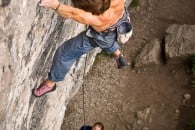


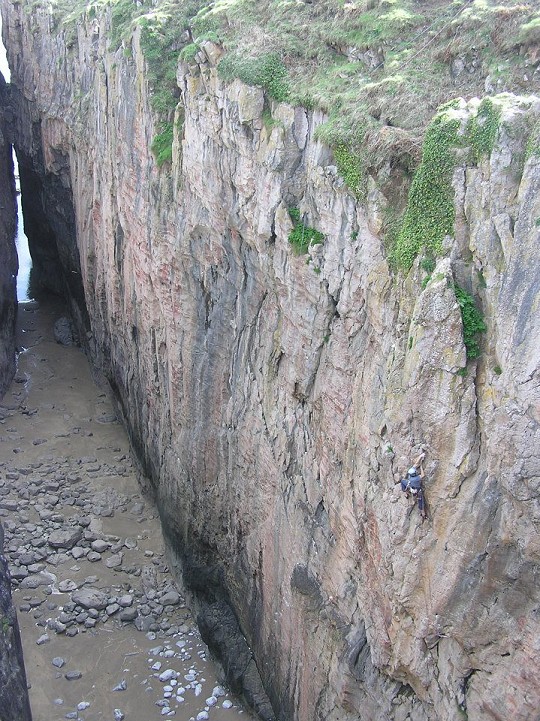













Comments